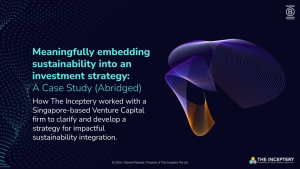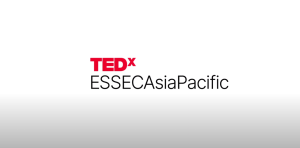Case Study “Unspun” by Anna Itkin
In July 2018 I was sitting at the airport waiting for my flight (it feels surreal nowadays!). I was engaged in my favorite activity – thinking. It must have been all the retail stores in the airport that triggered something because I was thinking about fashion (an unusual subject for me). And then I had a vision – what if…
We had a radically different business model for fashion production and consumption. Imagine.. scanning technology to scan your body shape, a personal stylist to work with you on the best fitting and flattering wardrobe, a designer to design it, and a manufacturer to produce it just for you, on-demand, with just the right number of high-quality timeless styles that fit you perfectly – colors and shape! All these work together in a close yet distributed network where everything is done remotely and can be delivered to wherever you are. And if after a few years, you want an upgrade or a change, you send back the fashion pieces you no longer want for reuse and remanufacturing, in a fully closed loop. And the best part? It should be affordable to everyone!

The benefits? Multi-level: from reduced waste and resource consumption to an open market and inclusive work options for fashion designers, stylists, and local manufacturers who are in fact technology geeks rather than tailors; a way for almost anyone to be well and comfortably dressed. There is a great potential to reset social and cultural phenomena as well as the production and consumption of our current fashion system. Sounds a bit like an overstimulated imagination, you could say.
Well, only a year and a half later I met a young woman who shared with me that she works for a company that uses new technology to custom design and manufacture clothes on demand in collaboration with others that enables circular manufacturing!
Time Magazine wrote about them: “The best part: no sizes” (1) and placed them on the 100 Best Inventions List in 2019. The revolutionary process, offered in San Francisco and Hong Kong, eliminates inventory, fabric waste, and ill-fitting standardizations to provide the only actually sustainable model that exists in the fashion industry (note: as far as I am aware at the time of writing).
An estimated 100 billion items of clothing are made each year for a global population of 7.8 billion people. Around 20% goes unsold, and cast-offs may be incinerated or landfilled. Unspun’s mission is to permanently alter the design, manufacturing, and consumption of fashion utilizing technology. While doing so, they aim to reduce global carbon emissions by 1% (note: in 2019 global CO2 emissions reached 36.8 Gt (2). On their website you can find a statement like this: “We strive for global change and massive impact to ensure the planet continues to self-regulate and support all life”.
What they are doing differently? First, there is no inventory, focusing on designing timeless garments that won’t go out of style, and are made only when someone asks for them (on-demand manufacturing). Second, they are implementing localized production, and third, use low-impact fabrics. With these steps they are creating a future of closed loops, zero-waste supply chains where jeans can be disassembled and assembled again, meaning garments won’t go to landfill/incineration after they’ve been worn down or are no longer wanted.
Being only at the beginning of their journey, Unspun’s jeans manufacturing process already uses 24% less CO2, compared to traditionally produced jeans – based on Cradle-to-Grave LCA (3). The dissolvable thread collaboration with Resortec paired with a 3D weaving project (not yet launched) eliminates cut waste entirely and allows the dismantling and reusing of the denim material. In the future, the company estimates, these innovations will reduce the CO2 impact by 53% – that’s over half the CO2 per pair of jeans.
The focus of Unspun’s value proposition is offering durable products as well as offering services related to these products and their recovery. Value creation and delivery are centered on “wear more, keep longer, and buy less” principles. Jeans are custom-made using the highest quality materials so that they last. If each person doubled the amount of time they wear a garment, GHG emissions would be 44% lower, which saves 36% of carbon per pair of jeans (4). The company also offers repairs and alterations to ensure the longest use possible. The company captures value from premium pricing, environmental and social benefits, service offerings, and partnership agreements.
The consequences of the Covid-19 pandemic highlighted the weakest links in many of our systems, among them the fashion industry. Mountains of unsold inventory – an aggravated excess condition we knew about long before the coronavirus, and shipping delays. Big retailers are reducing their warehouse staff in compliance with social distancing regulations, while independent designers’ new collections may be stuck in shuttered factories. It was not that long ago that waiting for a dress for a few weeks would have been unimaginable, but the pandemic has put everything into perspective and hopefully reshuffled our priorities in life.
Do we need to have immediate gratification in buying something and having it ASAP? I would argue that waiting for something really good makes it even better and eliminates impulse buying, unnecessary wardrobe cluttering, overproduction, and the tremendous environmental and social impacts of the fashion industry. The good old-days concept of pre-ordering seems to have kicked in these days – pre-ordering something weeks or months in advance and either paying fully upfront or split into installments, while your order is being made just for you. This business model is now being revived (5). This model is also advantageous to independent responsible labels working with small artisan groups and family-owned factories and minimal cash reserves – it supports the designers and manufacturers reliant on these orders for their livelihood. Many such boutique brands report that their sales have increased and customers are happy to wait even 1.5 months until their order arrives.
It seems that technology, customer behavior, and industry understanding of its impacts have reached convergence. I am not intending to make predictions here, but this might be the turning point for new business models like Unspun’s to conquer the market and disrupt the fashion industry. Let’s dare to imagine different systems and a different future as we can do better!
Bibliography
1 McCluskey, M. in Time Magazine. (Best Inventions 2019, 2019).
2 Global Carbon Project, <https://www.globalcarbonproject.org/> (2001 – 2020).
3 Ammar, R. Resortecs. LCA-Rebirth. (2019).
4 Unspun. <https://unspun.io/pages/climate-positive> (2020).
5 Farra, E. in Vogue (2020).






